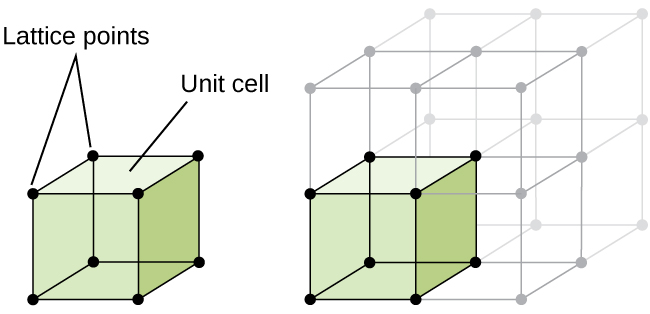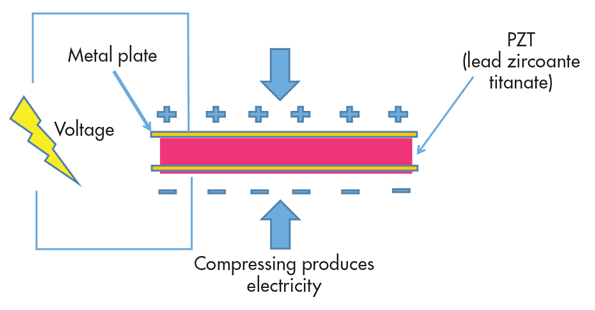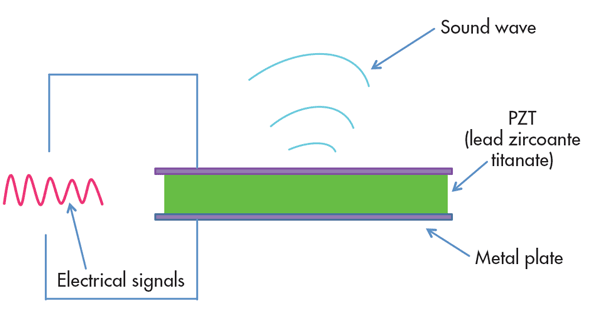How Piezoelectricity Works to Make Crystals Conduct Electric Current
Piezo what? It sounds like a lot to take in, but it’s simple to understand. The word piezoelectric originates from the Greek word piezein, which literally means to squeeze or press. Instead of squeezing grapes to make wine, we’re squeezing crystals to make an electric current! Piezoelectricity is found in a ton of everyday electronic devices, from quartz watches to speakers and microphones. In a nutshell:
Piezoelectricity is the process of using crystals to convert mechanical energy into electrical energy, or vice versa.
Regular crystals are defined by their organized and repeating structure of atoms that are held together by bonds, this is called a unit cell. Most crystals, such as iron have a symmetrical unit cell, which makes them useless for piezoelectric purposes.

IMAGE SOURCE
There are other crystals that get lumped together as piezoelectric materials. The structure in these crystals aren’t symmetrical but they still exist in an electrically neutral balance. However, if you apply mechanical pressure to a piezoelectric crystal, the structure deforms, atoms get pushed around, and suddenly you have a crystal that can conduct an electrical current. If you take the same piezoelectric crystal and apply an electric current to it, the crystal will expand and contract, converting electrical energy into mechanical energy.
Types of Piezoelectric Materials
There are a variety of piezoelectric materials that can conduct an electric current, both man-made and natural. The most well known, and the first piezoelectric material used in electronic devices is the quartz crystal. Other naturally occurring piezoelectric materials include cane sugar, Rochelle salt, topaz, tourmaline, and even bone.
Quartz-crystalAs piezoelectric technology started to take off after World War I we began developing man-made materials to rival the performance of quartz. Man-made piezoelectric materials include:
PZT is made from lead zirconate titanate and can produce more voltage than quartz with the same amount of mechanical pressure.
PZT-piezo-ceramicsPZT piezo ceramics used in ultrasonic sensors.
Barium Titanate.Barium Titanate is a ceramic piezoelectric material that was discovered during World War II and is known for its long lasting durability.
Lithium NiobateLithium Niobate is a material that combines oxygen, lithium, and nobium together in a ceramic material that performs similar to barium titanate.
How Piezoelectricity Works
We have specific materials that are suited for piezoelectricity applications, but how exactly does the process work? With the Piezoelectric Effect. The most unique trait of this effect is that it works two ways. You can apply mechanical energy or electrical energy to the same piezoelectric material and get an opposite result.
Applying mechanical energy to a crystal is called a direct piezoelectric effect and works like this:
- A piezoelectric crystal is placed between two metal plates. At this point the material is in perfect balance and does not conduct an electric current.
- Mechanical pressure is then applied to the material by the metal plates, which forces the electric charges within the crystal out of balance. Excess negative and positive charges appear on opposite sides of the crystal face.
- The metal plate collects these charges, which can be used to produce a voltage and send an electrical current through a circuit.
 IMAGE SOURCE
IMAGE SOURCE
That’s it, a simple application of mechanical pressure, the squeezing of a crystal and suddenly you have an electric current. You can also do the opposite, applying an electrical signal to a material as an inverse piezoelectric effect. It works like this:
- In the same situation as the example above, we have a piezoelectric crystal placed between two metal plates. The crystal’s structure is in perfect balance.
- Electrical energy is then applied to the crystal, which shrinks and expands the crystal’s structure.
- As the crystal’s structure expands and contracts, it converts the received electrical energy and releases mechanical energy in the form of a sound wave.
The inverse piezoelectric effect is used in a variety of applications. Take a speaker for example, which applies a voltage to a piezoelectric ceramic, causing the material to vibrate the air as sound waves.
 IMAGE SOURCE
IMAGE SOURCE